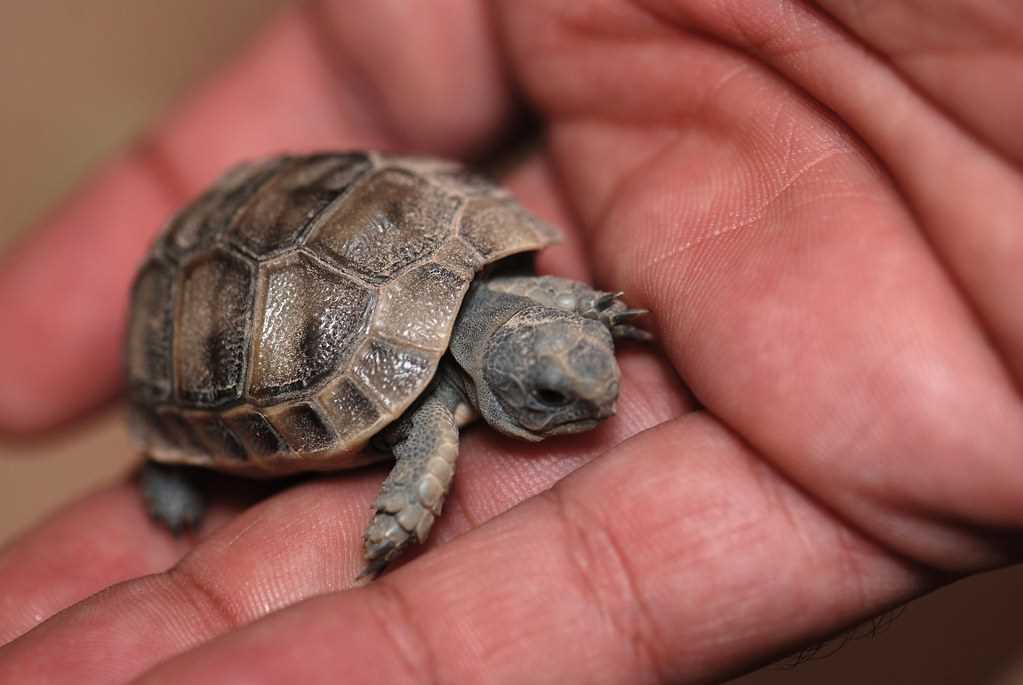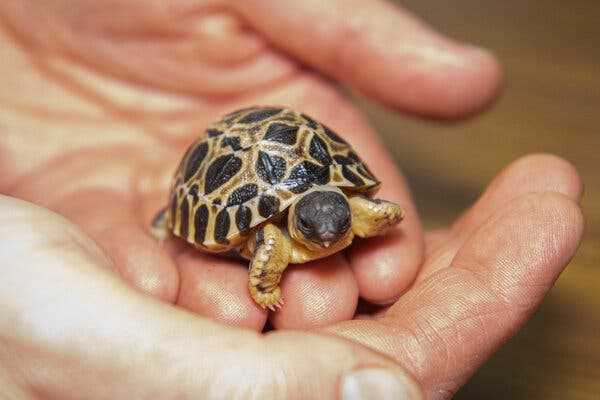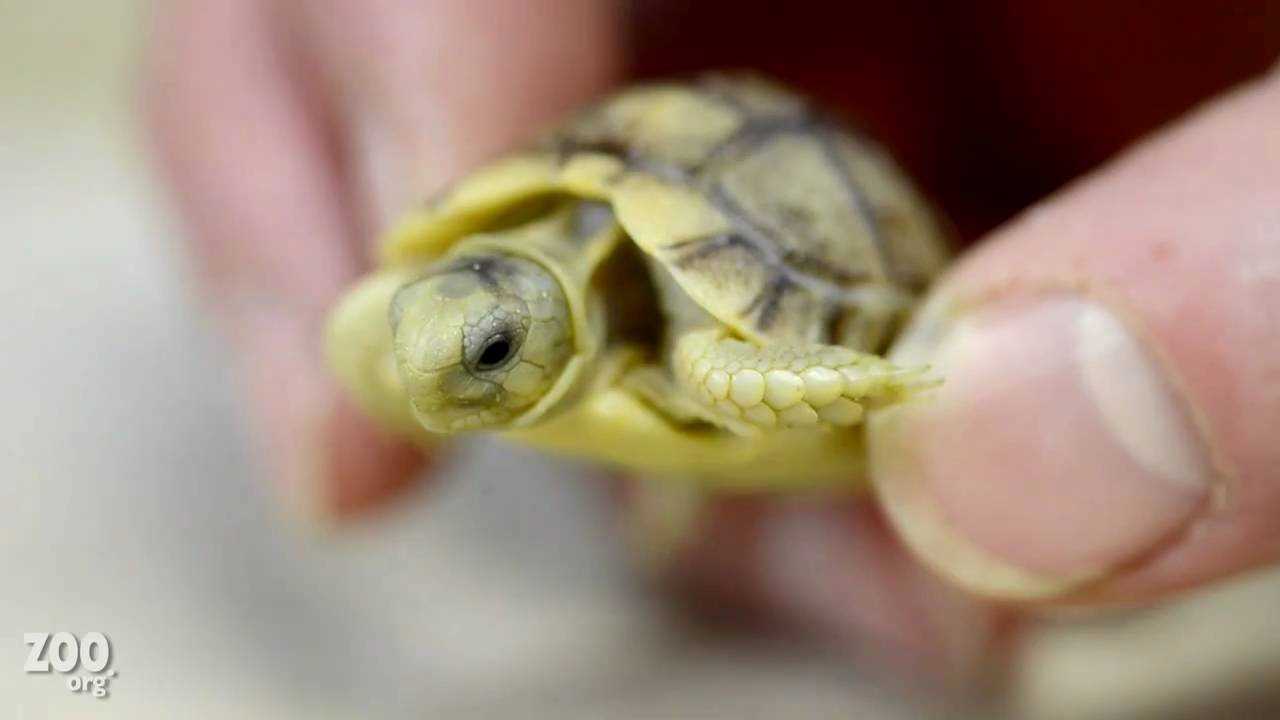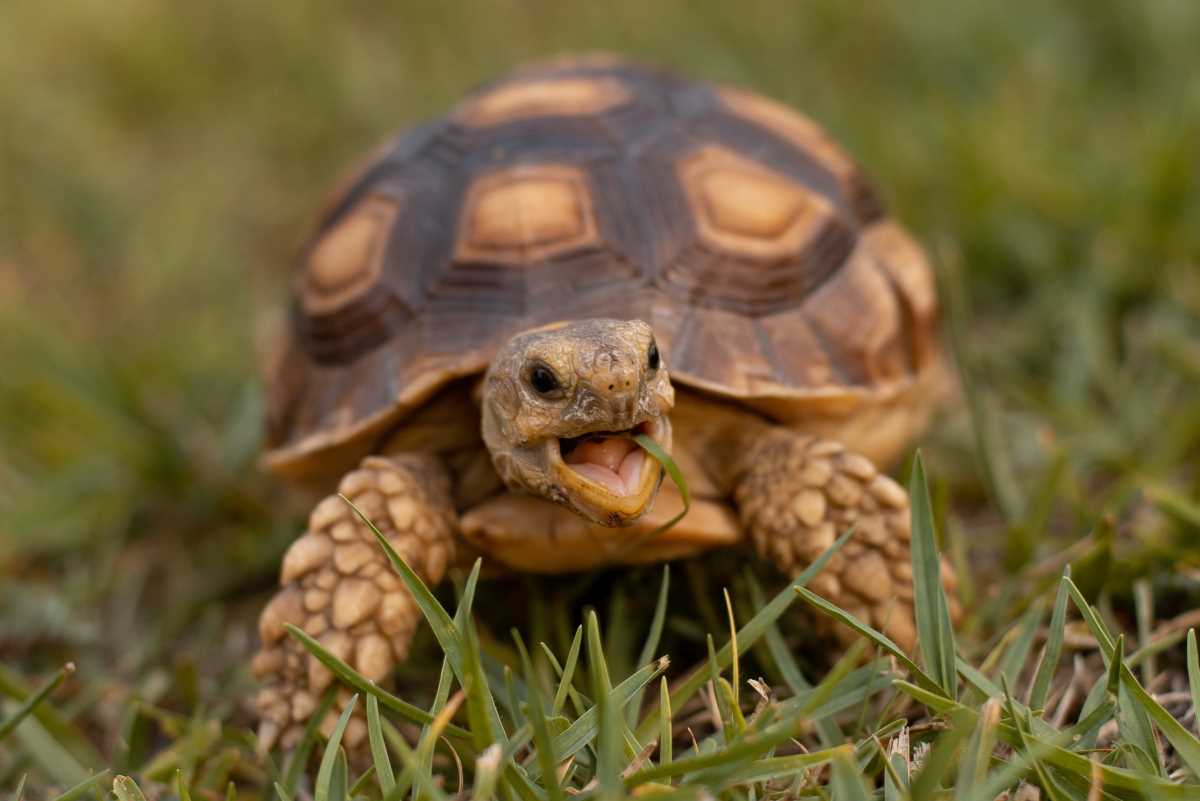
One of the most important aspects of tortoise care is creating the right living environment for them. Tortoises need a spacious enclosure where they can roam and explore. An outdoor enclosure is ideal for providing fresh air and natural sunlight, but an indoor habitat can also work, given it meets all the necessary requirements. The enclosure should have a substrate that mimics their natural habitat, such as soil or cypress mulch, as well as hiding spots and climbing opportunities. Regular cleaning and maintenance are essential to ensure a healthy living environment for your pet.
Caring for a Pet Tortoise
- Enclosure: Provide a spacious and secure enclosure for your tortoise to live in. Make sure it has enough room to move around and explore.
- Temperature: Maintain a suitable temperature gradient within the enclosure, with a warm basking area and a cooler area for your tortoise to regulate its body temperature.
- Lighting: Install proper lighting, including UVB bulbs, to provide your tortoise with the necessary UV rays for proper calcium absorption and overall health.
- Diet: Feed your tortoise a varied diet consisting of leafy greens, vegetables, fruits, and occasional protein. Avoid feeding them high-fat and high-sugar foods.
- Hydration: Ensure that your tortoise has access to fresh water at all times. Some tortoises may also benefit from occasional soaking or misting to maintain proper hydration.
- Healthcare: Regularly monitor your tortoise for signs of illness or injury. Consult a reptile veterinarian if you notice any concerning symptoms or behavior.
- Interaction: While tortoises may not be as sociable as some other pets, they still benefit from gentle handling and interaction. Take the time to bond with your pet and provide enrichment activities.
- Cleanliness: Keep your tortoise’s enclosure clean by regularly removing waste and replacing substrate. Also, ensure that any food or water dishes are cleaned and sanitized regularly.
- Safety: Check your tortoise’s enclosure for any potential hazards that could cause injury. Avoid exposing your pet to harmful substances or toxic plants.
By following these guidelines, you can ensure that your little tortoise is happy and healthy in its new home.
- Size: Tortoises come in various sizes, ranging from small to large. Consider the space you have available for your pet and choose a species that can comfortably fit in its enclosure.
- Climate: Different tortoise species have specific climate requirements. Some thrive in hot, dry climates, while others prefer cooler, more humid conditions. Research the natural habitat of each species and choose one that matches the climate of your area.
- Activity Level: Tortoises have different activity levels, with some being more active and outgoing, while others are more docile and prefer to spend their time burrowed or basking. Consider your own activity level and choose a tortoise that matches your energy level.
- Diet: Tortoise species have different dietary needs. Some are strictly herbivorous, while others may also eat insects or small animals. Make sure you are prepared to provide the appropriate diet for the tortoise species you choose.
- Availability: Some tortoise species may be more readily available as pets, while others may be harder to find. Research the availability of the species you are interested in and make sure you can obtain one from a reputable source.
By considering these factors, you can choose the right tortoise species for your home and ensure that you provide the best possible care for your new pet. Remember to always research and educate yourself about the specific needs of the tortoise species you choose to ensure a happy and healthy life for your tortoise.
Tortoise Habitat: Setting up the Perfect Enclosure
Creating the perfect habitat for your pet tortoise is essential for their overall health and well-being. A proper enclosure should mimic their natural habitat as closely as possible, providing them with the necessary space, temperature, and humidity levels to thrive.
Size and Space
When setting up the enclosure, consider the size of your tortoise species. Different species have varying space requirements. Generally, tortoises need ample space to roam and explore. A good rule of thumb is to provide at least 10 square feet of floor space for every inch of shell length for terrestrial tortoises. Arboreal tortoises, on the other hand, need vertical space and branches to climb on.
Substrate
The substrate you choose for your tortoise’s enclosure should be safe, comfortable, and mimic their natural environment. Avoid using substrates that can be ingested and cause digestive issues. Good options include coconut coir, cypress mulch, or a mixture of topsoil and play sand. The depth of the substrate should be deep enough for your tortoise to burrow and provide them with a sense of security.
Temperature and Lighting
Tortoises are ectothermic, meaning they rely on external sources of heat to regulate their body temperature. To provide the ideal temperature gradient, set up a basking spot with a heat lamp at one end of the enclosure, reaching a temperature of around 90°F (32°C). The rest of the enclosure should have a cooler area, around 75°F (24°C), where your tortoise can regulate its body temperature. A full-spectrum UVB light source is also crucial for tortoises to synthesize vitamin D3 and maintain strong bones.
Humidity
Humidity is essential for the health of your tortoise, as it helps with hydration and proper shedding. The humidity level should range between 50% and 70%. Mist the enclosure with water daily and provide a humid hide, which is a small shelter with damp substrate, to help your tortoise maintain proper humidity levels.
Enrichment
Creating an enriching environment is important to keep your pet tortoise mentally stimulated. Add various hiding spots, platforms, and branches for them to explore. Incorporate objects like rocks, logs, and plants to create a natural and interesting landscape. This will encourage natural behaviors and provide the opportunity for exercise.
| Important Points: | Description: |
|---|---|
| Size and Space | Consider the size requirements of your tortoise species when determining the enclosure size. |
| Substrate | Choose a safe and comfortable substrate that mimics their natural habitat. |
| Temperature and Lighting | Provide a temperature gradient and full-spectrum UVB lighting for proper thermoregulation. |
| Humidity | Maintain a humidity level of 50-70% through misting and the use of a humid hide. |
| Enrichment | Add various objects and structures to create a stimulating and natural environment for your tortoise. |
By following these guidelines, you can create a comfortable and enriching habitat for your pet tortoise, ensuring their well-being and happiness for years to come.
Tortoise Diet: Feeding Your Pet Properly

1. Determine the Specific Diet Requirements

2. Provide a Variety of Foods
Tortoises thrive on a varied diet. Offer a mix of leafy greens, vegetables, fruits, and even edible flowers. This ensures that your tortoise gets a wide range of nutrients and minerals required for optimal health.
3. Avoid Feeding Processed or Commercial Foods
While there are commercially available tortoise pellets or food mixes, it’s best to avoid relying solely on these. They often lack the necessary nutritional content, and a natural diet is always preferable. If you do use commercial food, make sure to supplement it with fresh, natural foods.
4. Calcium and Vitamin Supplements
Tortoises need a calcium supplement to support their shell and bone development. Provide a cuttlebone or a calcium block for them to chew on. Additionally, depending on your tortoise species, they may require vitamin supplements, especially Vitamin D3, to aid in calcium absorption.
5. Feed According to Age and Size
Tortoises’ dietary needs can vary depending on their age and size. Younger tortoises generally require a higher protein intake, while adult tortoises need a more fibrous and plant-based diet. Adjust the portion size and frequency of feeding accordingly.
6. Offer Water for Hydration
Although tortoises get most of their water from their diet, it’s essential to provide them with a shallow dish of clean, fresh water at all times. They may drink water or use it for soaking, which helps keep them hydrated and aids in digestion.
Remember, regular research and consultation with a reptile veterinarian are essential for providing the best diet for your pet tortoise. By feeding them a well-balanced, species-specific diet, you can ensure their overall health and longevity.
Tortoise Health: Recognizing and Preventing Common Issues
Keeping your pet tortoise in good health is crucial for its well-being and longevity. By being proactive in recognizing and preventing common health issues, you can ensure that your tortoise lives a happy and healthy life.
One of the most important factors in tortoise health is providing the proper diet. Tortoises are herbivores and require a diet rich in leafy greens, vegetables, and fruits. Avoid feeding them high protein or fatty foods, as this can lead to obesity and other health problems. It is also important to provide appropriate calcium supplements to support their shell and bone development.
Regular veterinary check-ups are essential to monitor your tortoise’s overall health and catch any potential issues early on. A veterinarian experienced in reptile care can examine your tortoise, check for signs of illness or disease, and provide guidance on proper care and treatment.
Tortoises are susceptible to respiratory infections, which can be caused by improper temperature and humidity levels in their habitat. Ensure that the enclosure is properly heated and that there is adequate ventilation to prevent respiratory issues. Additionally, a clean and dry environment is essential to prevent shell rot, a common problem in tortoises. Remove any damp or soiled substrate regularly and provide a dry area for your tortoise to bask.
Another common health issue in tortoises is parasites, such as mites or worms. Regularly check your tortoise for any signs of parasites, such as itching, visible mites, or changes in appetite. If any are found, seek veterinary treatment immediately.
Proper hydration is also essential for tortoise health. Ensure that your tortoise has access to fresh, clean water at all times. Some tortoises may not readily drink from a water dish, so you may need to mist or soak them to ensure they are adequately hydrated.
Lastly, be observant and learn to recognize any changes in your tortoise’s behavior or appearance. Any sudden changes in appetite, activity level, or appearance could be signs of underlying health issues. Keeping a close eye on your tortoise and seeking veterinary care when necessary will help ensure their continued well-being.
Tortoise Hydration: Providing Water For Your Pet
1. Water Bowl: One of the easiest ways to provide water for your tortoise is through a shallow, sturdy water bowl. Choose a bowl that is large enough for your tortoise to comfortably soak in and shallow enough for them to easily access the water. Place the water bowl in a secure area to prevent tipping.
2. Fresh Water: Keep the water in the bowl fresh and clean at all times. Replace it regularly to avoid the buildup of bacteria and algae. Additionally, make sure to use dechlorinated water or let tap water sit out for 24 hours to allow the chlorine to dissipate before offering it to your tortoise.
4. Diet and Hydration: The diet of your tortoise also plays a significant role in their hydration levels. Offer a variety of fresh fruits and vegetables with high water content, such as lettuce, cucumbers, and melons. These foods not only provide essential nutrients but also contribute to their water intake.
5. Soaking: In addition to having a water bowl, occasional soaks are beneficial for tortoises. This allows them to fully immerse themselves in water, hydrating their shell and skin. Fill a shallow container with lukewarm water and allow your tortoise to soak for 20-30 minutes. Supervise the soaking to ensure their safety.
6. Monitoring: It is essential to monitor your tortoise’s hydration levels regularly. Signs of dehydration include dry skin, sunken eyes, loss of appetite, and lethargy. If you notice any of these symptoms, increase the availability of water and consult a veterinarian if necessary.
Remember, proper hydration is vital for the overall health and well-being of your pet tortoise. By providing a suitable water source, monitoring their hydration levels, and offering a balanced diet, you can ensure that your tortoise stays healthy and happy.
Tortoise Temperature: Maintaining the Ideal Environment
Temperature plays a crucial role in the well-being and health of your pet tortoise. As cold-blooded animals, tortoises rely on external sources of heat to regulate their body temperature. It is essential to create and maintain an ideal temperature range within the tortoise enclosure.
The ideal temperature range for most tortoise species is between 75 and 85 degrees Fahrenheit (24-29 degrees Celsius). This temperature range mimics the natural conditions in which tortoises thrive in their native habitats.
Providing a Heat Source
In order to maintain the appropriate temperature range, it is necessary to provide a dedicated heat source within the enclosure. This can be accomplished using a heat lamp or a ceramic heat emitter. The heat source should be placed on one side of the enclosure, creating a temperature gradient.
Monitoring the Temperature
Regularly monitor the temperature inside the enclosure to ensure it remains within the desired range. Use a reliable thermometer to measure the temperature at various spots within the enclosure, including both the warm and cool sides. Adjust the heat source accordingly to maintain the ideal temperature range.
Avoiding Temperature Extremes
Controlling the Temperature at Night
During the night, temperatures can naturally drop. To ensure your tortoise remains comfortable, provide additional heating if necessary. Depending on the species, a night-specific heating pad or heat emitter might be required to maintain a suitable temperature during the cooler hours.
Consulting an Expert
If you are uncertain about maintaining the ideal temperature for your specific tortoise species, it is always best to consult with a reptile veterinarian or an experienced tortoise keeper. They can provide guidance based on the specific needs of your pet tortoise.
Remember, maintaining the ideal temperature range is essential for the health and well-being of your pet tortoise. By providing a warm and comfortable environment, you are ensuring their longevity and overall happiness.
Interacting with Your Tortoise
Interacting with your tortoise is an important aspect of pet ownership. While they may not be as interactive as dogs or cats, tortoises can still form a bond with their owners and enjoy spending time with them. Here are some tips for interacting with your tortoise:
1. Spend time with your tortoise regularly

Even though tortoises are not known for their social behavior, it’s still important to spend time with them regularly. This can help your tortoise become more comfortable with you and can enhance the bond you have with your pet. You can sit by their enclosure and observe them, or you can take them out for supervised walks in a controlled environment.
2. Handle your tortoise gently
3. Provide enrichment activities
While tortoises may not play fetch or chase toys like other pets, they still benefit from enrichment activities. You can offer them different textures to explore, such as rocks, branches, or even a shallow pool of water for them to soak in. These activities can stimulate their natural instincts and keep them mentally and physically active.
4. Pay attention to their body language
Tortoise Enrichment: Keeping Your Little Tortoise Stimulated
Here are some tips to keep your little tortoise stimulated:
- Provide a variety of hiding spots: Place different types of hiding spots, such as rocks, logs, and plants, in your tortoise’s enclosure. This will give them places to explore and retreat to when they feel the need for privacy.
- Offer different textures: Tortoises love to feel different textures under their feet. You can include various substrates like sand, soil, rocks, and bark in their enclosure to provide them with a range of sensory experiences.
- Introduce new objects: Rotate toys, objects, and enrichment items regularly to keep your tortoise curious and engaged. You can use items like branches, balls, and puzzle feeders to provide mental and physical stimulation.
- Allow for digging and foraging: Tortoises enjoy digging and foraging for food. Create a designated digging area in their enclosure and hide their food in different spots to encourage natural behaviors and keep them active.
- Offer opportunities for basking: Providing a basking area with a heat lamp or UVB light allows your tortoise to regulate its body temperature and soak up essential rays. This not only mimics their natural environment but also provides mental stimulation.
- Encourage exploration: Create a safe space outside of the enclosure where your tortoise can explore. Supervised outdoor time can provide new sights, smells, and opportunities for exercise.
Remember, while providing enrichment is important, it is equally crucial to observe your tortoise’s behavior and adjust the level of stimulation accordingly. Every tortoise is unique, so pay attention to their preferences and provide enrichment that suits their individual needs.
Tortoise Hygiene: Cleaning and Grooming Tips
Proper hygiene is essential for the health and well-being of your pet tortoise. Regular cleaning and grooming practices help prevent the buildup of bacteria and parasites, ensuring a clean and safe environment for your little reptile friend.
1. Cleaning the Tortoise Enclosure
Start by cleaning the tortoise enclosure regularly. Remove any uneaten food, feces, and soiled bedding. Use a reptile-safe disinfectant to clean the enclosure, ensuring that you rinse it thoroughly afterward to remove any residue. Avoid using harsh chemicals or cleaning products that may be toxic to your tortoise.
2. Bathing Your Tortoise
Bathing is an important part of tortoise hygiene. Use a shallow dish or container filled with lukewarm water to give your tortoise a gentle bath. The water should be just deep enough to cover the tortoise’s legs. Allow your little tortoise to soak in the water for about 15-20 minutes, which will help keep their skin hydrated and promote shedding. You can also use a soft toothbrush or cloth to gently clean their shell and skin. Make sure to pat your tortoise dry with a clean towel afterward.
3. Cleaning the Tortoise Shell
The shell is an essential part of a tortoise’s body, and proper care is important to keep it clean and healthy. Use a soft-bristled brush or toothbrush to gently scrub the shell, removing any dirt or debris. Avoid using harsh scrubbing techniques or abrasive materials that can damage the shell. After cleaning, rinse the shell thoroughly with clean water and pat it dry with a towel.
- Tips:
- If you notice any cracks or abnormalities on the shell, consult a veterinarian for advice and assistance.
4. Cleaning Tortoise Accessories
Regularly clean the accessories in the tortoise enclosure, such as food dishes, water bowls, and hides. Remove any uneaten food and rinse the dishes with clean water. Scrub them with a soft brush or sponge to remove any stubborn residue. Allow them to dry thoroughly before placing them back in the enclosure.
By following these cleaning and grooming tips, you can help ensure that your pet tortoise stays happy, healthy, and clean. Remember to always handle your little reptile friend gently and provide a stress-free environment during the cleaning process.
Tortoise Safety: Ensuring a Safe Environment
Tortoises may be small creatures, but they still need a safe environment to live in. Here are some important tips to ensure the safety of your pet tortoise:
1. Enclosure: Your tortoise’s enclosure should be secure and escape-proof. Make sure that the walls and the lid of the enclosure are tall enough to prevent your tortoise from climbing out. Check for any gaps or holes that your tortoise may be able to squeeze through.
2. Substrate: Choose a substrate that is safe for your tortoise to walk on. Avoid using materials that can cause harm or be ingested, such as gravel or small rocks. Instead, opt for a substrate like coconut coir or cypress mulch.
3. Temperature: Maintain the ideal temperature range for your tortoise’s species. Tortoises are ectotherms, meaning they rely on their environment to regulate their body temperature. Use a reliable thermometer to monitor the temperature in the enclosure and make adjustments as needed.
4. Lighting: Provide appropriate lighting for your tortoise. They need exposure to UVB light to metabolize calcium and maintain healthy shell growth. Invest in a reptile-specific UVB bulb and ensure that it is placed at the correct distance from your tortoise.
5. Hideouts: Create hideouts inside the enclosure where your tortoise can retreat when they want to feel safe or secure. These can be in the form of small caves or shelters made from non-toxic materials.
6. Toxic Plants and Substances: Be aware of any toxic plants or substances that may be harmful to your tortoise if ingested. Remove any potentially toxic plants from the enclosure and make sure that cleaning products or any other chemicals are safely stored away.
7. Supervision: When your tortoise is outside of its enclosure, always supervise them to prevent accidents or injuries. Keep a close eye on them, especially if there are other household pets or young children around.
8. Regular Inspections: Regularly inspect the enclosure for any signs of wear and tear, damage, or potential hazards. Fix any issues promptly to ensure that your tortoise’s environment remains safe.
By following these safety tips, you can provide a secure and comfortable environment for your pet tortoise, allowing them to thrive and live a long, healthy life.
Tortoises can live for over 50 years, with some species even reaching 100 years or more. This means that getting a tortoise as a pet is a long-term commitment that requires careful planning and dedication.
When deciding to bring a tortoise into your life, it’s essential to consider your own lifespan and long-term plans. Remember, a tortoise can outlive its owner, so it’s crucial to have a plan in place for its care and well-being in case something happens to you.
Proper diet, habitat, and healthcare are essential for ensuring your tortoise lives a long and healthy life. Providing a balanced and nutritious diet, creating a suitable enclosure, and regular veterinary check-ups are all crucial factors in promoting longevity for your pet tortoise.
It’s also essential to note that different tortoise species have varying lifespans. Researching the specific species you are interested in is crucial to understand the average lifespan and care requirements for that particular tortoise.
Remember, owning a tortoise is a long-term commitment, and it’s crucial to be prepared for the responsibility and dedication required to provide a happy and healthy life for your pet for many years to come.
Tortoise Adoption: Finding a Pet Tortoise
If you’re considering getting a pet tortoise, one option to consider is tortoise adoption. Adopting a tortoise can be a rewarding experience, as you not only provide a forever home for a tortoise in need, but you also contribute to conservation efforts. Here are some tips on finding a pet tortoise through adoption:
1. Research Local Shelters and Rescue Organizations
Start your search by researching local animal shelters and rescue organizations that may have tortoises available for adoption. These organizations often have tortoises that have been abandoned, surrendered, or rescued and need a new home.
2. Contact Reptile Enthusiast Groups and Forums

Reach out to reptile enthusiast groups and forums in your area. These groups often have members who are looking to rehome their tortoises or may have information on local tortoise adoption events.
3. Attend Reptile Expos and Adoption Events
Reptile expos and adoption events are great places to find a variety of tortoise species available for adoption. These events often have reputable breeders, rescue organizations, and private owners looking to find new homes for their tortoises.
4. Consider Adopting an Adult Tortoise
5. Ensure Proper Care and Rehoming Requirements
Before adopting a tortoise, make sure you can meet the care requirements and have the appropriate enclosure set up. Responsible adoption organizations will often have specific guidelines and requirements to ensure the tortoise’s well-being.
6. Consult with Experts and Experienced Tortoise Owners
Consulting with experts and experienced tortoise owners can provide valuable insights and guidance in adopting a tortoise. They can offer advice on species selection, care, and any specific considerations for the tortoise you’re interested in.
Adopting a pet tortoise can be a wonderful experience, and it allows you to give a loving home to a tortoise in need. By following these tips, you can find a pet tortoise through adoption and be a part of the effort to provide better lives for these amazing creatures.
Tortoise Legalities: Researching Local Laws
Permits and Licenses:
Note: It is essential to familiarize oneself with the specific laws and regulations of the local area to ensure compliance.
Habitat Requirements:
Local laws may also outline specific requirements for the habitat and enclosure of pet tortoises. These requirements may include factors such as minimum size, types of materials, and the inclusion of certain features (e.g. hiding spots, basking areas).
Transportation Restrictions:
Trade and Sale Regulations:
Welfare and Protection Laws:
Many jurisdictions have laws in place to ensure the welfare and protection of tortoises and other reptiles. These laws may prohibit activities such as illegal hunting, trade of endangered species, or mistreatment of animals.
Tortoise Resources: Where to Find More Information
1. Reptile Magazines: Many publications dedicated to reptiles, such as Reptiles Magazine and Herptile Hobbyist, regularly feature articles, care guides, and expert advice specifically for tortoise owners. These magazines can be found at your local bookstore or can be subscribed to online.
2. Online Forums: Joining online forums and discussion boards dedicated to tortoises can be a great way to connect with other tortoise owners and enthusiasts. These platforms allow you to ask questions, share experiences, and learn from others who have firsthand knowledge of keeping tortoises.
3. Reptile Expos: Reptile expos and shows are events where reptile breeders, vendors, and enthusiasts gather to showcase and sell various reptiles, including tortoises. These expos often feature knowledgeable experts who are available to answer your questions and provide valuable insights into tortoise care.
4. Veterinarians: It’s essential to have a reptile veterinarian who specializes in tortoises. They can provide medical care, routine check-ups, and offer guidance on proper nutrition and habitat setup. They are also a valuable resource for any health concerns or questions you may have about your pet.
5. Reptile Societies and Associations: There are many organizations and societies dedicated to reptile enthusiasts, including tortoise owners. These groups often organize events, workshops, and educational programs to promote responsible pet ownership and provide resources for tortoise care.
6. Books and Publications: There are numerous books and publications available that focus specifically on tortoise care. These resources can provide in-depth information on topics such as tortoise species, habitat setup, feeding, health, and more. Some recommended books include “The Tortoise Manual” by A.C. Highfield and “Tortoises: A Beginner’s Guide” by Andrew Hermes.
By utilizing these tortoise resources, you can ensure that you have access to accurate and up-to-date information on how to care for your pet tortoise. Remember, proper care is crucial for the health and well-being of your pet, so never hesitate to seek guidance from trusted sources.
Tortoise Myths: Separating Fact from Fiction
- Myth 1: Tortoises are slow and lazy.
- Myth 2: Tortoises can live solely on lettuce.
- Myth 3: Tortoises don’t need to drink water.
While tortoises can obtain some hydration from the food they eat, they still require a separate water source. Providing clean, fresh water is crucial for their overall health. Tortoises should have access to a shallow dish of water at all times, allowing them to soak and drink as needed. - Myth 4: Tortoises don’t need heat or UVB lighting.
This is a dangerous myth that can have detrimental effects on a tortoise’s health. Tortoises are ectothermic, which means they rely on an external heat source to regulate their body temperature. Providing a warm basking spot, as well as UVB lighting, is essential for their proper growth and metabolism. Without these, they can suffer from metabolic bone disease and other health issues. - Myth 5: Tortoises are low-maintenance pets.

I’m Lena Adams—a product of an unconventional upbringing in the African wilderness. My father, a daring explorer of African wildlife, sparked my fascination with reptiles, a passion that intertwined with the tragic loss of my mother during an expedition, leaving an indelible mark on my life. Driven to understand the creatures that captivated my parents, I embarked on my journey, sharing insights about reptiles, frogs, and lizards on my website. Through my explorations and conservation efforts, I honour my family’s legacy while seeking connections—to the creatures, nature, and the mother whose presence I yearn to understand.
